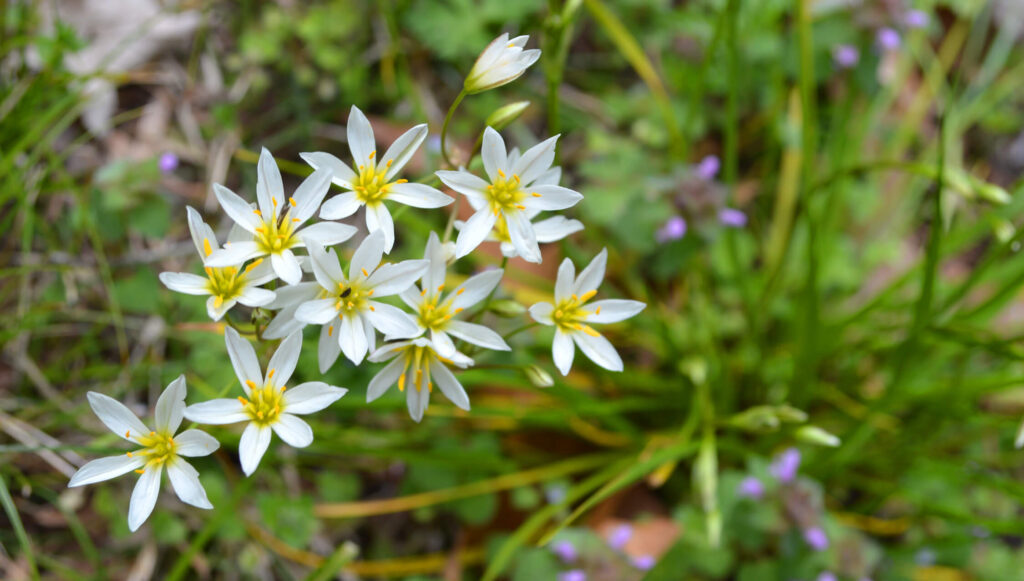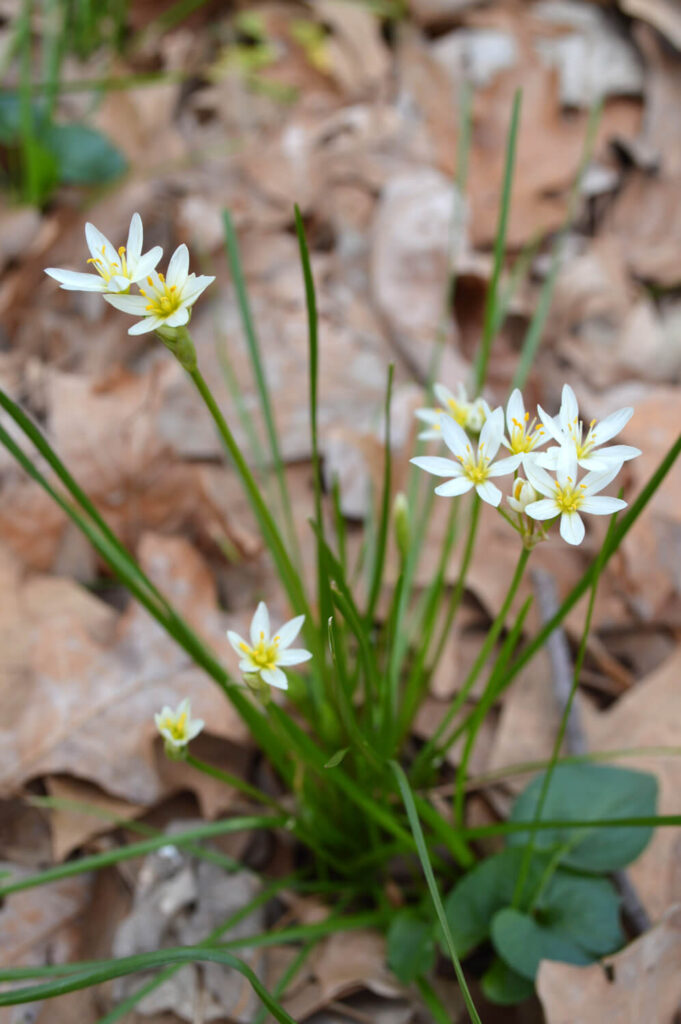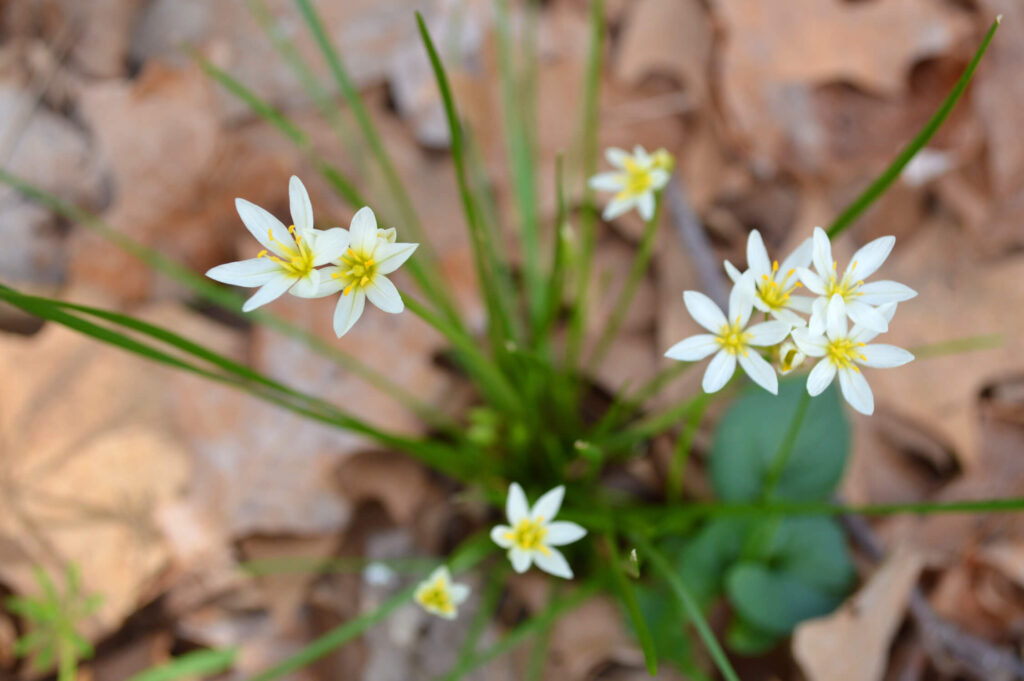I love the flowers of false garlic, which bloom in large numbers, but as the blooms fade, the grass-like leaves are quite abundant. I prefer not to have them in my flower beds, but I leave them blooming in the lawn and will not cut the grass until the blooms are done. It blooms in early spring in sunny locations with well-drained soil. It can tolerate part shade conditions and drought.

Plant Description
Also known as crow poison, Nothoscordum bivalve is a perennial flowering plant that grows from a bulb. It might be confused with wild onion or wild garlic, but it lacks the onion or garlic smell that typifies those plants.
The leaves are flat and grass-like, but glossy and almost waxy. They can be anywhere from 6-10 inches tall. Stems are hollow and support multiple flowers on one stem. The flowers are white with bright yellow stamens. Flowers have 6 petals and are about an inch in diameter.
These native wildflowers are found in lawns, grassy areas around roads, disturbed areas, and sometimes in flower beds. They spread by seeds. It is native to the U.S. and can be found throughout the Southeast and Midwest. It is hardy in zones 5 to 9.

Wildlife Uses
As an early spring flower, it attracts bees, flies, and butterflies, which you can see buzzing along your lawn. As the common name indicates, it may be toxic to animals.
Removal
This plant is hard to remove it from places you don’t want it to grow. It grows from a bulb so if you don’t get all of the roots and bulbs out of the soil, it will regrow the next year. It is nearly impossible to grab the leaves and pull it up. Manual removal by digging it up is the only way to remove it. In some states, this is a protected wildflower; so check before you dig.
Additional References
- http://www.wildflower.org/plants/result.php?id_plant=NOBI2
- http://plants.usda.gov/core/profile?symbol=NOBI2
- http://jimmccormac.blogspot.com/2011_04_01_archive.html

